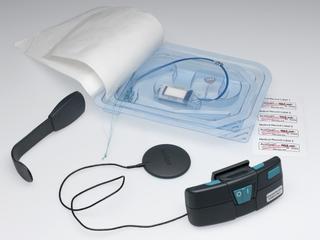
Lundia hollow fibre single use dialyser, Germany, 1979-1980
- maker:
- Gambro Limited




Lundia hollow-fibre single-use dialyser, plastic, made by Gambro, Germany, 1979-1980
A dialyser, or ‘haemodialyser’, is the filtering unit of a kidney dialysis machine. It works as an artificial kidney to filter blood of waste products when a person’s kidneys fail. The dialyser consists of hollow fibres packed in a column. Blood from the patient passes through the tube inside the fibres. The dialysis fluid bathes the outside. Waste substances pass through the fibre walls and are carried off in the fluid. Using such a structure meant a large surface area for dialysis was packed into a small volume. Consequently, dialysis takes less time and is more convenient for the patient. Lundia is the product name given by its Swedish maker, Gambo.
Details
- Category:
- Therapeutics
- Object Number:
- 1981-1707
- Materials:
- metal (unknown) and plastic (unidentified)
- Measurements:
-
overall: 240 mm x 80 mm 55 mm, .17kg
- type:
- haemodialyser
- credit:
- Gambro Ltd.




